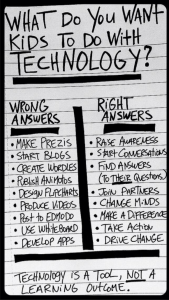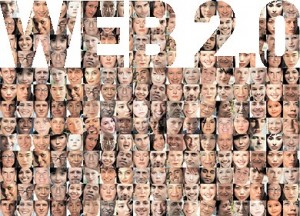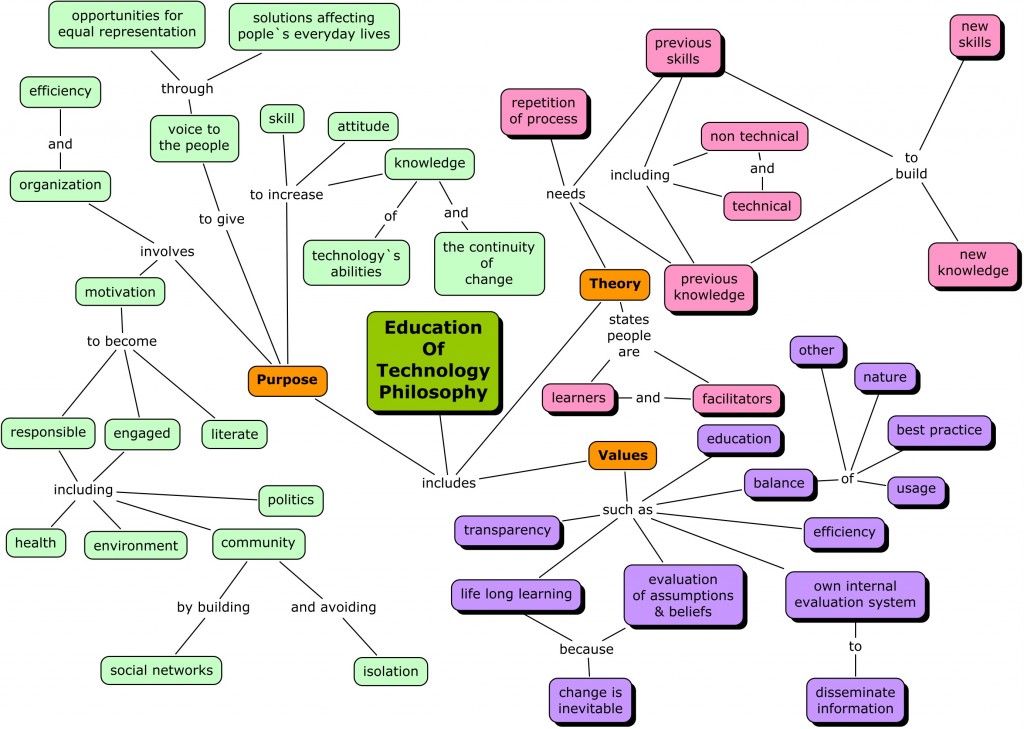These days I have been thinking about technology integration and why technology should be used in the classroom, especially now that the school I currently work for has made the transition to a 1:1 school. From my perspective the teachers have embraced the idea of students using computers in the classroom and are really starting to explore how they can use technology to improve student learning. It has been impressive to watch a teaching staff work to integrate technology into their classroom practices. We are using Moodle as our LMS and the number of daily usage amongst teachers & students is very impressive:
I have noticed an increase in the number of conversations around the staff room on how to maximize the use of computers in the classroom, with Moodle being just one integration tool being discussed. It is in this context that I consider this image from 9 Wrong And 8 Right Ways Students Should Use Technology by Jeff Dunn:
I am not sure if this simple division of right and wrong is correct, but it is a good conversation starter. As usual when it comes to articles on education websites I find the comment section to be just as enlightening as the article itself. In the comment section underneath the article Rnarcio writes, “You are right in that technology is not an outcome, but it is far more than a tool. It is closer to becoming an appendage. There is always an excuse to put a tool down and do things manually. The longer we keep calling it a tool, the longer people will find a way to put that tool down.” I think this makes a lot of sense, although the thought of technology as another “appendage” might scare some people and create images of cyborg future.
When you consider how much our society’s reliance on technology is growing it is easy to see how technology integration is not just about using any old tool. These are not tools that are equal to using a pen or pencil. In fact, there is growing evidence that technology is transforming the way our brains work. It would be interesting to know if a similar transformation took place with the development centuries ago of pen and paper.
Not only are our brains being transformed, but also how we work is being transformed. I am a big believer in authentic learning and creating as much as possible opportunities for classroom activities that reflect what people do in their everyday lives. What do Scientists do? That is what should be done in Science class. What do Historians do? That is what should be done in History class. What do Mathematicians do? That is what should be done in Math class. I could go on but I hope you get the picture.
If you look at learning this way technology integration makes more sense. The activities on both the left and the right work together to provide a comprehensive modern education. Yes, Scientists raise awareness and start conversations, but they may do this through a presentation made using Prezi. Yes, Historians may change minds, but their method of doing so might be through creating a new learning app. Yes, Mathematicians might take action, but their form of action might start with producing and distributing a video.
Yes, computers are tools, but they are tools that are transforming who we are and what we do. It is only natural that how we teach and learn follows suit, and part of this is focusing on how to use the tools in a authentic way. As Taramaca says in the comment section “…I do think that learning to use the tools of language (including digital ones) should be an outcome as well.”
I agree with Rnarcio that simply classifying computers as tools makes it easier to ignore them or choose to use other tools, with teachers often choosing tools that are more familiar to them. Teachers need to embrace the idea that using these tools effectively in the classroom will maximize student learning and help them to prepare for the world they will work and live in. I think this is what Taramaca means when (he?she?) says in the comment section, “I do think that we should always have some “bigger” outcome in mind when we use digital tools.” It is important to teach modern “literacy” and digitial tools and thinking have altered what this means. As well, the pervasiveness of technology in society means that this can no longer be properly accomplished by isolating the skills to be taught in a forty minute per week class that competes for students’ attention with a number of other subjects.
However, integration is not easy, especially as the challenge becomes to balance a number of different smaller goals to accomplish the “bigger outcome”, including developing technology skills, learning content, etc. Teachers have to work together and have conversations to develop a plan that works for their school. Having a model to provide a framework for these conversations is helpful. One model is the SAMR model, an easy to understand model on technology integration:
I think it is only natural for the majority of teachers to begin the integration process at the Substitution level, but working together and understanding that it is important for learning in their classrooms to include both the left and the right lists.




 For my ETEC511 course I was asked to define Web 2.0:
For my ETEC511 course I was asked to define Web 2.0: